 |
King of Chemicals Manufacturers |
Specifications, Properties, Uses, SDS of L-Glutamic Acid IP USP Dietary Supplement BP Ph Eur EP FCC Food Grade Manufacturer Supplier Exporter Wholesale & Small Packs, CAS Number 56-86-0. |
|
| King of Chemicals has several associated companies having accreditations like cGMP, GLP - FDA Approved Good Manufacturing Practice and Good Laboratory Practice of WHO standard, ISO-9001, ISO-14001, ISO/IEC 17025, ISO ISO-45000, HACCP, FSSC 220000, FSSAI, "REACH" Registered, Kosher & Halal Certified. e-CTD and DMF support can be made available if needed. We offer USP NF BP Ph Eur EP IP JP Analytical Reagent FCC Food Grade Chemicals & Nutraceuticals. | |
        |
|
Muby Chem Pvt. Ltd. is a several decades old group of companies, engaged in manufacturing, supplying, distributing, wholesale supplies of L-Glutamic Acid IP USP Dietary Supplement BP Ph Eur EP FCC Food Grade for actual users, including retail or small pack supplies for research and development work.
We supply fine and speciality chemicals, pharmaceutical excipients, mineral fortifiers in chemically pure, analytical reagent grade, IP BP USP Ph Eur EP JP and other pharmaceutical grade monograph including FCC Food grade chemicals and Nutraceuticals at best prices. We and/or our associated units have all the facilities to supply as per cGMP standard observing good manufacturing practice and good laboratory practice. We can assure low microbial count and also offer a test certificate for the same. We maintain warehouses across USA, India, and UAE. Our group exports to USA, Canada, Mexico, Argentina, Brazil, Chile, Korea, Malaysia, Thailand, Indonesia, Europe, and several other parts of the world. We supply in wholesale container loads to small pack of few grams. Solid products may be specified for it size and shape as desired by the buyer.


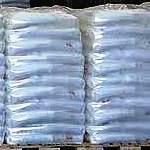
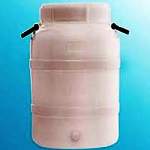
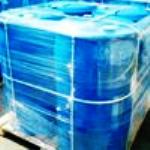
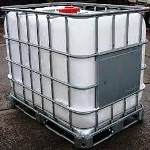
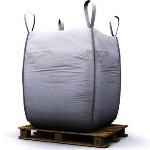
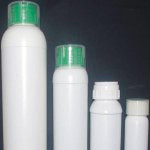
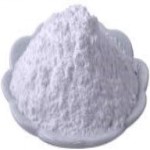
L-Glutamic Acid CAS Number 56-86-0
For Properties Specifications Uses of L-Glutamic Acid Click Properties, Specifications, Uses, Price, Process of L-Glutamic Acid Manufacturer.
For For SDS MSDS Sheet of L-Glutamic Acid Click SDS Safety Data Sheet MSDS Sheet of L-Glutamic Acid Manufacturer.
The Properties, Specifications, Monograph and Uses of L-Glutamic Acid:
Specifications of Glutamic Acid BP Ph Eur Grade:
C5H9NO4 --- 147.1 --- CAS 56-86-0
Action and use: Amino acid.
DEFINITION
Glutamic acid contains not less than 98.5 per cent and not more than the equivalent of 100.5 per cent of (2S)-2-aminopentanedioic acid, calculated with reference to the dried substance.
CHARACTERS
A white or almost white, crystalline powder or colourless crystals, freely soluble in boiling water, slightly soluble in cold water, practically insoluble in acetic acid, in acetone and in alcohol.
IDENTIFICATION
First identification: A, B
Second identification: A, C, D
A. Specific optical rotation.
B. Examine by infrared absorption spectrophotometry, comparing with the spectrum obtained with glutamic acid CRS. Examine the substances prepared as discs. If the spectra obtained show differences, dissolve the substance to be examined and the reference substance separately in the minimum quantity of water, evaporate to dryness at 60C and record new spectra using the residues.
C. Examine the chromatograms obtained in the test for ninhydrin-positive substances. The principal spot in the chromatogram obtained with test solution (b) is similar in position, colour and size to the principal spot in the chromatogram obtained with reference solution (a).
D. To 2.0 mL of solution S (see Tests) add 0.1 mL of phenolphthalein solution and 3.0 mL to 3.5 mL of1 M sodium hydroxide to change the colour of the indicator to red. Add a mixture of 3 mL of formaldehyde solution, 3 mL of carbon dioxide-free water and 0.1 mL of phenolphthalein solution, to which sufficient1 M sodium hydroxide has been added to produce a pink colour. The solution is decolourised. Add1 M sodium hydroxide until a red colour is produced. The total volume of 1 M sodium hydroxide used is 4.0 mL to 4.7 mL.
TESTS
Solution S: Dissolve 5.00 g in 1 M hydrochloric acid with gentle heating and dilute to 50.0 mL with the same acid.
Appearance of solution: Solution S is clear and colourless.
Specific optical rotation: + 30.5 to + 32.5, determined on solution S and calculated with reference to the dried substance.
Ninhydrin-positive substances: To pass the test.
Chlorides: Dissolve 0.25 g in 3 mL of dilute nitric acid and dilute to 15 mL with water. The solution, to which 1 mL of water is added instead of dilute nitric acid, complies with the limit test for chlorides (200 ppm).
Sulfates: Dilute 5 mL of solution S to 15 mL with distilled water. The solution complies with the limit test for sulfates (300 ppm).
Ammonium: 50 mg complies with limit test B for ammonium (200 ppm). Prepare the standard using 0.1 mL of ammonium standard solution (100 ppm NH4).
Iron: In a separating funnel, dissolve 1.0 g in 10 mL of dilute hydrochloric acid. Shake with 3 quantities, each of 10 mL, of methyl isobutyl ketone, shaking for 3 min each time. To the combined organic layers add 10 mL of water and shake for 3 min. The aqueous layer complies with the limit test for iron (10 ppm).
Loss on drying: Not more than 0.5 per cent, determined on 1.000 g by drying in an oven at 105C.
Sulfated ash: Not more than 0.1 per cent, determined on 1.0 g.
Specifications of Glutamic Acid USP Dietary Supplement:
C5H9NO4 --- 147.13
l-Glutamic acid;
S-2-Aminopentanedioic acid --- CAS 56-86-0.
UNII: 3KX376GY7L
DEFINITION
Glutamic Acid contains NLT 98.5% and NMT 101.5% of l-glutamic acid (C5H9NO4), calculated on the dried basis.
IDENTIFICATION
Infrared Absorption.
ASSAY
To pass the test.
Acceptance criteria: 98.5% to 101.5% on the dried basis.
Residue on Ignition: NMT 0.1%.
Chloride and Sulfate, Chloride:
To pass the test.
Acceptance criteria: NMT 0.02%
Chloride and Sulfate, Sulfate:
To pass the test.
Acceptance criteria: NMT 0.02%
Iron: NMT 10 µg/g
Related Compounds:
To pass the test.
Acceptance criteria: Any secondary spot of the Sample solution is not larger or more intense than the principal spot of the Standard solution.
Individual impurities: NMT 0.5%
Total impurities: NMT 2.0%
Optical Rotation, Specific Rotation:
To pass the test.
Acceptance criteria: +31.5° to +32.5°
Loss on Drying: Dry a sample at 105C for 3 h: it loses NMT 0.1% of its weight.
Packaging and Storage: Preserve in well-closed containers, and store at controlled room temperature.
Glutamic Acid is also offered as per IP EP grade as per the latest monograph.
Specifications of L-Glutamic Acid FCC Food Grade:
Glutamic Acid; L-2-Aminopentanedioic Acid
C5H9NO4 Formula weight 147.13
INS: 620 CAS: 56-86-0
DESCRIPTION
L-Glutamic Acid occurs as a white, free-flowing, crystalline powder. It is slightly soluble in water, forming acidic solutions. The pH of a saturated solution is about 3.2.
Function: Salt substitute; nutrient.
Identification: The infrared absorption spectrum of the sample exhibits relative maxima at the same wavelengths as those of a typical spectrum as shown in the section on Infrared Spectra, using the same test conditions as specified therein.
Assay: Not less than 98.5% and not more than 101.5% of C5H9NO4, calculated on the dried basis.
Lead: Not more than 5 mg/kg.
Loss on Drying: Not more than 0.1%.
Optical (Specific) Rotation: Between +31.5° and +32.5°, calculated on the dried basis.
Residue on Ignition: Not more than 0.3%.
The MSDS-SDS Hazard Statement of L-Glutamic Acid:
L-Glutamic acid SDS Sheet, Safety Data Sheet
MSDS Sheet, Material Safety Data Sheet 04-Feb-24
1. Product Identification
Product Name & Other Names: L-Glutamic acid.
CAS No.: 56-86-0
EINECS EC Code: 200-293-7
Relevant uses and uses advised against (if any): Industrial Manufacturing.
Supplier: American Molecules, 9910 Bent Oak Dr, Houston, TX 77040, USA.
Call Toll Free: 1-855-55-AMMOL 1-855-552-6665.
In case of emergency contact: Will be given with the supply.
2. Hazards Identification
GHS, Globally Harmonized System Classification in accordance with 29 CFR 1910
Classification according to Regulation (EC) No 1272/2008
Not a hazardous substance or mixture according to Regulation (EC) No. 1272/2008.
This substance is not classified as dangerous according to Directive 67/548/EEC.
Labeling according to GHS & Regulation (EC) No 1272/2008
GHS Label Elements NONE |
Signal Words: None
Precautionary statements:
P261: Avoid breathing dust/fume/gas/mist/vapors/spray.
P262: Do not get in eyes, on skin, or on clothing.
P281: Use personal protective equipment as required.
P302+P352: IF ON SKIN: Wash with plenty of soap and water.
P304+P340: IF INHALED: Remove victim to fresh air and keep at rest in a position comfortable for breathing.
P305+P351+P338: IF IN EYES: Rinse cautiously with water for several minutes. Remove contact lenses, if present and easy to do. Continue rinsing.
P337+313: If eye irritation persists get medical advice/attention.
3. Composition/Information on Ingredients
Product Name & Other Names: L-Glutamic acid.
CAS No.: 56-86-0
EINECS EC Code: 200-293-7
4. First Aid Measures
Always seek medical advice after the first aid treatment.
Inhalation: If inhaled, remove to fresh air. If not breathing, give artificial respiration. If breathing is difficult, give oxygen. Get medical attention.
Ingestion: Contact medical center quickly. Never give anything by mouth to an unconscious person. Get medical attention.
Skin Contact: Immediately flush skin with plenty of water for at least 15 minutes. Remove contaminated clothing and shoes. Get medical attention. Wash clothing before reuse. Thoroughly clean shoes before reuse.
Eye Contact: Check for and remove any contact lenses. Immediately flush eyes with running water for at least 15 minutes, keeping eyelids open. Cold water may be used. Get medical attention.
5. Fire Fighting Measures
Combustible at high temperature. High heat or direct flame is necessary to cause ignition. Toxic fumes, carbon monoxide and nitrogen oxides may be formed in fire.
Explosion: at high temperature, explosive vapor-air mixtures may be formed.
Fire Extinguishing Media: Dry chemical, foam, water spray or carbon dioxide. Do not use a solid stream of water, since the stream will scatter and spread the fire. Water spray may be used to keep fire exposed containers cool.
Special Information: In the event of a fire, wear full protective clothing and NIOSH-approved self-contained breathing apparatus with full face piece operated in the pressure demand or other positive pressure mode. At high temperatures under fire conditions, it may produce toxic or irritating fumes. Fire-extinguishing work is done from the windward and the suitable fire-extinguishing method according to the surrounding situation is used.
6. Accidental Release Measures
Personal precautions, protective equipment and emergency procedures: Avoid breathing dust/fumes/gas/mist/vapors/spray. Use individual protective equipment (waterproof boots, suitable protective clothing, safety glasses, etc.). Restrict unprotected personnel from the area. Prevent any contact with hot surfaces. Do not approach facing the wind.
Environmental precautions: Do not let the product enter drains, soil or water sources.
Methods and materials used for containment Cleanup procedures and Storage: Avoid dust formation. Keep away from heat. Keep away from sources of ignition. Provide ventilation. Contain spilled material. Cover with an inert, non-combustible absorbent material, (e.g. sand, earth, diatomaceous earth, vermiculite). Vacuum or sweep-up and remove to an approved disposal container.
7. Handling and Storage
Precautions for safe handling: Apply according to good manufacturing and industrial hygiene practices. Ensure proper ventilation. Wash thoroughly after handling. Do not drink, eat or smoke while handling. Avoid contact with skin, eyes and clothing. Minimize dust generation. Avoid breathing dust/fumes/gas/mist/vapors/spray. Keep container tightly closed. Avoid ingestion and inhalation. Use individual protective equipment (waterproof boots, suitable protective clothing, safety glasses, etc.).
Conditions for safe storage, including any incompatibilities: Keep away from heat and source of fire. Store in cold, dry and ventilated area away from heat sources and protected from sunlight in tightly closed original container. Keep air contact to a minimum. Do not breathe dust. Do not leave the material container open. Store protected from heat, sparks and ignition sources and incompatible materials. Avoid contact with skin and eyes. Avoid inhalation of dust/mist/vapor. Do not store with incompatible materials like oxidizing material and acids. Store in light-resistant containers. Prevent any electrostatic discharge.
8. Exposure Controls/Personal Protection
Airborne Exposure Limits: This product does not contain any hazardous materials with occupational exposure limits established by the region-specific regulatory bodies.
Ventilation System: A system of local and/or general exhaust is recommended to keep employee exposures as low as possible.
Personal Respirators (NIOSH Approved): For conditions of use where exposure to the substance is apparent and engineering controls are not feasible, consult an industrial hygienist. For emergencies, or instances where the exposure levels are not known, use a full-face piece positive-pressure, air-supplied respirator.
Skin Protection: Wear impervious protective clothing, including boots, gloves, lab coat, apron or coveralls, as appropriate, to prevent skin contact.
Eye Protection: Use chemical safety goggles and/or a full face shield where splashing is possible. Maintain eye wash fountain and quick-drench facilities in work area.
Other Control Measures: Maintain good housekeeping in work area. Handle in accordance with good industrial hygiene and safety practice. Wash hands after handling.
9. Physical and Chemical Properties
Appearance: White or almost white, crystalline powder or colorless crystals.
Odor: Not available.
Odor threshold: Not available.
pH: No data found.
Relative density: 1.54
Melting Point: 205C literature.
Initial boiling point and boiling range: No data found.
Flash point: No data found.
Auto-ignition temperature: No data found.
Decomposition temperature: No data found.
Upper/lower flammability or explosive limits: No data found.
Vapor pressure: No data found.
Vapor density: No data found.
Evaporation rate: No data found.
Flammability (solid, gas): No data found.
Partition coefficient: n-octanol/water: No data found.
Solubility: Freely soluble in boiling water, slightly soluble in cold water, practically insoluble in acetic acid, in acetone and in alcohol.
Viscosity: No data found.
10. Stability and Reactivity
Stability: Stable under ordinary conditions of use and storage.
Hazardous Decomposition Products: Carbon dioxide, carbon monoxide, nitrogen oxides and toxic fumes may form when heated to decomposition.
Hazardous Polymerization: Not reported. However, it can explode under certain conditions.
Incompatibilities: Acids, oxidizing agents, heat and sparks.
Conditions to Avoid: Heat, flames, sunlight, ignition sources and incompatibles.
11. Toxicological Information
Toxicity:
LD50 Oral - Rat - male and female: > 5.110 mg/kg.
LD50 Dermal - Rat - male and female: > 2.000 mg/kg.
Mutagenic Effects: No data found.
Reproductive Effects: No data found.
Carcinogenicity: No component of this product present at levels greater than or equal to 0.1% is identified as probable, possible or confirmed human carcinogen by IARC, ACGIH, OSGHA or NTP.
12. Ecological Information
Toxicity to fish: static test LC50 - Cyprinus carpio (Carp) - > 100 mg/l - 96 h.
Toxicity to daphnia and other aquatic invertebrates: static test EC50 - Daphnia magna (Water flea) - > 100 mg/l - 48 h.
Biodegradability: Readily biodegradable
Persistence and Degradability: Unlikely to persist due to water solubility.
Mobility: Will likely be mobile in the environment due to its water solubility.
Results of PBT and vPvB assessment: No data found.
13. Disposal Considerations
Whatever cannot be saved for recovery or recycling should be managed in an appropriate and approved waste disposal facility.
14. Transport Information
Land Transport DOT USA, TDG Canada & ADR/RID Europe: Not regulated.
Sea Transport IMO/IMDG: Not regulated.
Air Transport ICAO/IATA: Not regulated.
15. Regulatory Information
USA:
SARA 311/312 Hazards: See section 2.
California Prop. 65 Components: This product does not contain any chemicals known to State of California to cause cancer, birth defects, or any other reproductive harm.
DISCLAIMER: The information and recommendations set forth herein are presented in good faith and believed correct as of the date hereof. It is compiled from various sources, and it is not necessarily all inclusive nor fully adequate in every circumstance. In addition, these suggestions should not be confused with nor followed in violation of applicable laws, regulations, rules, or insurance requirements applicable. This SDS MSDS sheet is intended only as a guide to the appropriate precautionary handling of the material by a professionally trained person using this product. Individuals receiving the information must exercise their independent judgment in determining its appropriateness for a particular purpose. This shall not constitute a guarantee for any specific product features and shall not establish a legally valid contractual relationship. In no case shall our company be liable to loss or damages by the product user.

L-Glutamic Acid Manufacturers, Suppliers, Exporters, Wholesalers:
King of Chemicals manufacturers

Plot No. 2900/46&47 + 2900/163to167, GIDC, Ankleshwar, Dist. Bharuch, India
India, USA, UAE
TEL: (Office) 91-22-23774610, 91-22-23723564
e-mail: info@kingofchemicals.com
Copyright and Usual Disclaimer is Applicable --- April 2, 2025
If I give you “My Word” Nobody can undo it.
If I sign an “Agreement” my Lawyer will undo it
Our products are for industrial and laboratory use only. The user must test the material before use. We are not dispensing chemists or druggist and do not offer over the counter type (OTC) products for medical use by individuals.
We and our associates manufacture pure chemicals surpassing Monograph Specifications of Analytical Reagent Standards, British & European Pharmacopoeia BP Ph Eur EP Standard, US Pharmacopoeia USP NF Standard, Indian Pharmacopoeia IP Standard, Japan Pharmacopoeia JP Standard, FCC Food Grade Standard. |
|